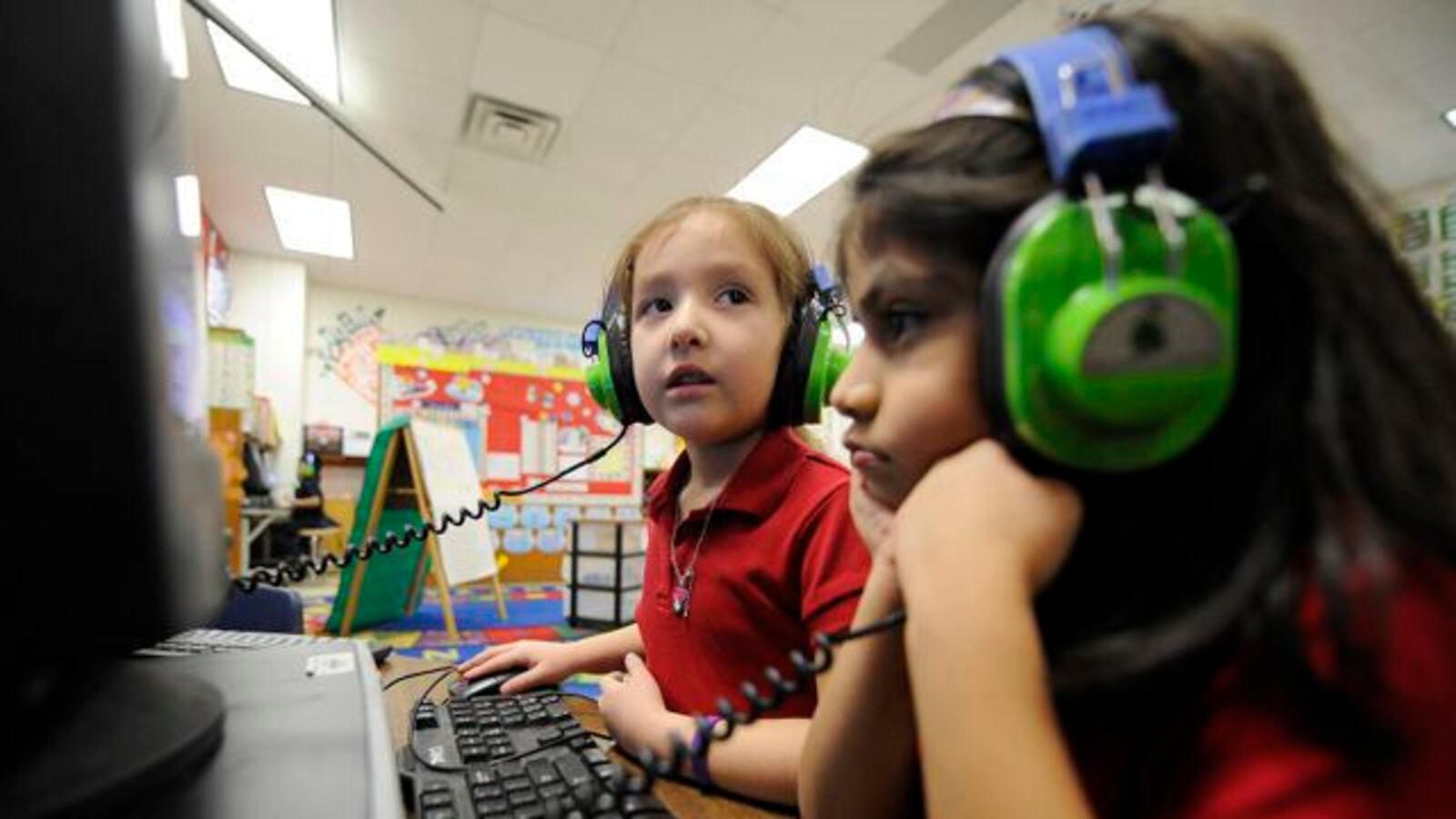Thousands of educators from across the country converged on Denver’s convention center this week to explore how technology can help — and sometimes hinder — classroom learning.
Digital devices and technology are commonplace in classrooms, from math lessons on iPad apps to more out-there experiments like using virtual reality to teach geography.
But as such practices have spread, detractors have emerged, too. One former teacher suggested in a Washington Post column that all technology be removed from the classroom. His rationale: Devices keep students from focusing on their work.
Chalkbeat caught up with a handful of Colorado teachers at this week’s International Society for Technology in Education conference, which concluded Wednesday.
For the most part, educators had a lot of good things to say about technology, saying it has revolutionized communication between students and created new ways to record students’ progress. Yet they also cautioned that it can be expensive and could create divides between students from different socioeconomic backgrounds.
Here’s a sample of what the teachers had to say:
When using technology in his Skinner Middle School classroom in Denver, Kelsey Andersen makes sure not to coddle his students. In his eyes, the best way for a student to learn is through doing.
“I think that’s kind of the point. I don’t teach them how to use something, I let them go for it. I give them a little information on how to get started, and that’s it. For example, I’ll open up PowerPoint, and tell them I’d like a presentation on rockets.”
But there are limitations to getting some of the gadgets for his class.
“Cost is always a barrier. One-time purchases are easier to get. You can get a $1,500 grant to buy something, but then you need a couple hundred dollars in software to get it to run. It’s the the consumable costs that are a bit harder.”
Matthew Hunter is a third grade teacher at a very small, rural school district in Rangely, in northwest Colorado. He saw some ideas at ISTE he’d like to bring back to his school, but knows all too well the limits for a cash-strapped district.
“We’re trying to make sure we stay on a reasonable level. Chromebooks, maybe. The coding, the programming, we’re looking at that. We have to start at the most rudimentary level.”
Gwynn Moore is a teacher at Aurora Frontier, which serves students in preschool through eighth grade. She uses technology in her classroom to teach students different storytelling methods.
“The students make newscasts that are viewed by the school. I have students learning how to research information. They are learning how to be prepared to utilize many different types of technology.”
One pitfall teachers embracing technology should be mindful of, Moore said, is what happens after the last school bell.
“Let’s say a student doesn’t have access at home, then what happens?”
Students at Littleton’s Deer Creek Middle School make comics books using computer programs such as Photoshop. They find the storyboard process an arduous one, but Pamela Farris, an art and technology teacher, sees the value nonetheless.
“They hate it, but it really helps them figure out the sequence of events. They’re having to work together.”
Farris said the frenetic pace of technological change is also on her mind.
“Things become outdated. I gave one kid a DVD. He asked me, ‘What do I do with this?’ Really it’s the same projects. You just update them.”
Digital storytelling is one concept from the conference Linda Horne would like to emulate.
She teaches English language learners at Challenge to Excellence, a charter school in Parker that serves students from kindergarten to eighth grade. Horne already introduces her youngest kids to some digital work.
“With my little ones, we do blogs. I have video blogs of them speaking. I can share them with the parents. It’s a great way to document their progress.”


